Photo amateur photographer at various stages of its evolution
The evolution curve is described in my other article . At first I wanted to talk only about interchangeable lenses, but, on reflection, I decided that it was too narrow.
So, let me remind the curve

Sites of the S-shaped curve are designated by figures. But I propose a slightly different classification, since they do not coincide with the stages of evolution:
• Stage of awakening interest or “lure them guys” - section 1.
• Apprenticeship stage - plots 1,2,3
• Awareness stage - plots 3-4
• The stage of the search for beauty and new meanings - section 5.
On each of them (of course, the names are quite conditional) the amateur photographer requires different photo equipment. We will talk about this.
Stage of awakening interest
For unknown reasons, at an unknown point in time (which may never come at all), a person suddenly becomes aware of an impulse in himself, a desire to try to take pictures. It is clear that he does not know how and does not understand, so he does not have special requirements for the functionality of the equipment. He just does not understand what is needed. It is important that it be cool, beautiful, not very heavy / volume and not worse than the others.
Under these criteria, an amateur compact camera with a non-replaceable lens from the so-called discharge is ideal. "Superzoom" (another term - "ultrazoom"). Those. when the built-in lens can shoot in a wide range of focal lengths (RF), for example, 4.3–258 mm. What is in terms of a full frame is the range of equivalent focal lengths (EGF), taking into account the crop factor of this camera from 24 to 1440 mm. That is, as they say, the optical zoom is 60x.
When I was shooting with such a camera, there was no such equipment yet, I used a superzoom with EGF of 35-280 mm.
')
What is really good ultrazoom? This is a truly compact all-in-one solution that allows you to try all genres of photography.
The main task of the initial stage is the formation of positive motivation. Strong enough for a neophyte to have the strength to overcome the difficulties that lie ahead. So that he understands why he overcomes them and gets pleasure from acquiring new knowledge and skills. In other words, half in jest, the main thing is “not to frighten”. For this, ultrazoom is perfect.
I will illustrate what was said with my old frames.
Superzoom good on tours

Fisherman's Bastion, Budapest
And with some effort, you can already get beautiful pictures that are admired by friends and acquaintances (as well as on instagram and on Yandex pics). for example

View of the evening Budapest
In this case, it is important to try shooting at dusk, in the so-called. "Mode time". Here is another similar frame.
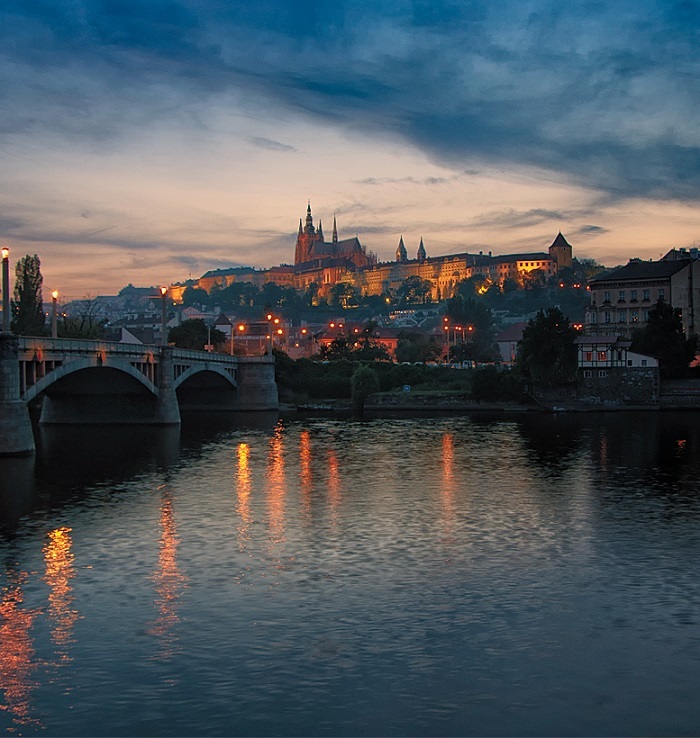
Prague Castle
This frame is interesting because it stimulates the novice to learn how to handle digital photos. Because the original frame looks like this

In order to learn from the source to do what I showed (of course, this is just one of the possible options), it took me several years.
Ultrasound allows you to make and conceptual (term conditional) pictures like these

or

The pair of frames shown for me personally was an important milestone in evolution, because I felt that there is “something in them” in them, this is not just a passing “photo”. This feeling is just very conducive to the formation of positive motivation for further hobby photography.
Ultrasum allows you to feel the beauty of photohunting. The next frame shook me when I saw the result on
the monitor

In fact, there were 5 meters to a squirrel. And here she is close to “as if alive” and individual hairs are visible.
The following frame illustrates the use of ultrazoom in genre photography.
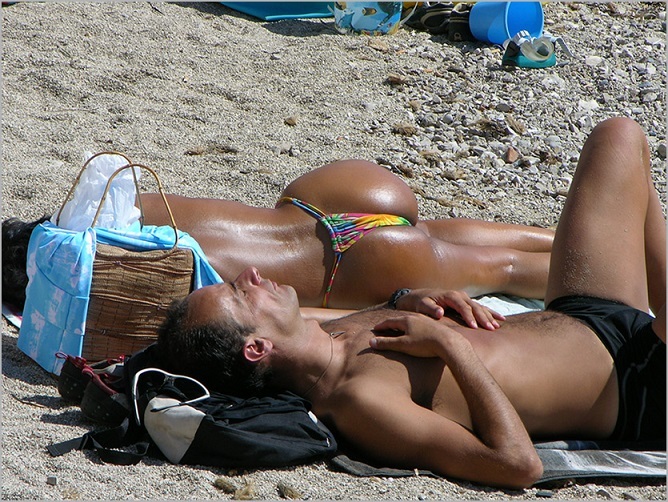
Nice beach
A telephoto lens allows you to shoot people and animals in “natural” conditions from a distance. Not every person is able to shoot a classic “street” with a “fifty dollars”, many are embarrassed. ("Fifty" - a lens with a fixed RF = 50 mm.)
Finally, frames from the ultrazoom can already be displayed in fairly decent places. In this case, the emphasis is not on the “decentness” of the place, but on the fact of the display of their work to outsiders. From a psychological point of view, at this moment there is a separation of the work from its creator, as I (following N. Berdyaev) express, “objectification”. At the same time, “suddenly” it turns out that a photo that seemed so cool to you is perceived by others as a special “crap”. With photos of sunsets, cats and dogs, all public galleries are clogged. That your pictures are not even secondary, but endlessly banal.
Those. simultaneously with the moments of “pure buzz”, the moments of awareness of one’s limitations and imperfections are also needed. Disadvantages point to the need to learn - and pleasure creates motivation for such efforts.
It is important that ultrazoom photography simultaneously allows you to feel the limitations of the technique. For example, a sit-down squirrel can still be removed - but it is already difficult to move, the autofocus (AF) speed does not allow. When using, as they say, the “long end” of the lens produces a large number of blurred frames, it comes to the realization that from a formal opportunity to shoot 1440 mm on EGF to successful frames there is a “huge distance”. Everything trembles and shakes. There comes an understanding that the available aperture values at the long end are too “dark”, the shutter speed is required too long. Therefore, with the hands of little you take off, you need a tripod. And better, a brighter (photographers often say "fast") lens.
At this moment a transition takes place (I emphasize once again that it may not happen individually) to the next stage.
Also at this point it is advisable to analyze your preferences. After all, I advise you to use the ultrasound not only because it is convenient for beginners. The focal range from 32 to 1440 mm allows you to do anything. But a statistical analysis of your images with a sufficient sample size will show your favorite DF.
To do this, you need to put all the photos in one folder (I did it on an array of about 4000 frames) and run the ExposurePlot program (there are other applications). The output will be a schedule

on the abscissa axis of which the focal lengths are plotted, and on the vertical axis - the number of frames taken on this DF.
Figure too small, consider the individual fragments.
Wide angle

Hmm, 1600 shots from 4000 (40%) is, of course, a lot from my current point of view. But for a beginner, this is normal.
Next fragment

It can be seen that on the focal from 40 to 60 mm about 600 frames were made.
And the last fragment
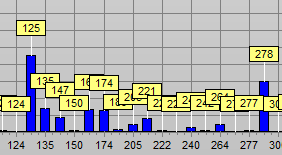
shows the demand for long FR.
Thus, the analysis of an array of photos shows that it is advisable to me personally to have a wide-angle zoom, “fifty dollars” and telephoto lenses from 120 mm and longer.
Naturally, your preferences will be different, I illustrate the approach to the analysis.
Stage of apprenticeship
At this point, you need to get rid of the ultrazoom. It is not easy, I personally was helped by the fact that I was leaving for work in the USA and told myself that I would buy a camera with interchangeable lenses (CSR). Those. I cut off my retreat.
What technology is required at this stage? In commission stores in Texas, I constantly met 1-2-3 film cameras. This is due to the fact that in American photography schools training begins on film cameras (at least, that was 10 years ago). Well, and when such a carcass becomes unnecessary, she goes to the next “schoolboy” through the commission.
I think this is a very correct approach. Shooting on the film (and, especially, on the slide) teaches you to think before pressing the "release" button. In this sense, digital cameras corrupt, turning many into "thoughtless clickers." Which remove "everything that moves", not including the brain.
I myself shot on film a long time ago with FED-4 camera, with a full development cycle and photo printing in the bathroom. Of course, now shooting on film is technically difficult and costly. We still need to find a film, and then a laboratory, where to show it. But if there is enough fuse, I highly recommend taking pictures on a film camera.
Similarly, corrupts a large zoom. From the point of view of a photo artist, a 60-fold zoom is a meaningless disgrace. Instead of deliberately building the composition of the frame, most of the lazy owners of such "combines" stupidly stand on the spot and push the zoom button.
And to zoom in at this stage, you need, as they say, "legs." For the apprenticeship stage, a “fix” is ideal (recall, a lens with a fixed RF).
What fix to choose? The usual recommendation in such cases is 50 / 1.8. This is the cheapest and affordable fix. But I think that it is better to take the lens longer. I will explain why. The point is that a person needs to be put in the most difficult position. So that he turned on the "smarter" and began to look for those frames that can be removed by the limited set of equipment that he has.
Lyrical digression. In the dark years of developed socialism, many creative individuals complained about the dominance of ideological dogmas and censorship. What did not prevent them from creating good (as it now turns out) works. Then the ideology and censorship were canceled. The creators rejoiced. And personally, I was expecting a stream of masterpieces and a nettle. But it quickly became clear that boundless freedom by no means contributes to the birth of unbanal works.
Thus, the choice of FR fix depends on the degree of motivation. Personally, I, for objective reasons (I needed a macro lens with a maximum FR for work) acquired a fix 150 / 2.8. And filmed only for a few years. However, I will not take such extreme advice to others. In my opinion, a macro lens with a fixed DF of about 90–100 mm would be optimal.
Once again I emphasize the essence of this approach. Around a person with a camera is an infinite number of plots (we are talking about our vision, taking into account the ability to turn our head). However, a lens with a fixed RF “cuts” out of this infinite continuum only a specific piece of limited size. The longer the focal length, the smaller the fragment. The idea boils down to the fact that one of the main tasks of the educational stage is to develop the ability to photographic "in and out ". Those. the ability to see in a huge panorama the plot, which is and technically possible to capture the existing lens. Each lens produces its own “vision”. At the apprenticeship stage, it is necessary to develop this ability (preferably still aware of the course of this process) for a specific lens. Further, on each subsequent “glass” (another slang term for interchangeable lenses) this process will proceed easier and faster.
I will illustrate the idea with photographs.
Here is a frame at the widest angle (technically, this is a panorama of many frames) that is accessible to a person standing on the Bolshoi Moskvoretsky Bridge and looking at the Kremlin and the Moscow River

The photo is interesting in its own way, but if you don’t be lazy, force yourself to think and switch to vision through a lens with RF = 150 mm, then you can find such a frame in this scene

Which is more interesting than the endless panorama, at least by the fact that this composition is not visible to the naked eye (the distance to the buildings in the background is 4-5 km). (The point of shooting is slightly offset compared to the wide-angle panorama, but in this case it doesn’t matter.)
It’s because tele-lenses make me “turn on creative”, see what I don’t see under normal conditions - I love them.
Further. The combination of fast and tenacious autofocus CSR (I do not specifically specify which carcasses we are talking about, it can be a mirrorless camera, a SLR, etc.) with a bright telephoto lens that allows you to shoot birds and animals in motion.
If on the ultrazoom frame a protein patiently posed motionless, then on this frame she moved
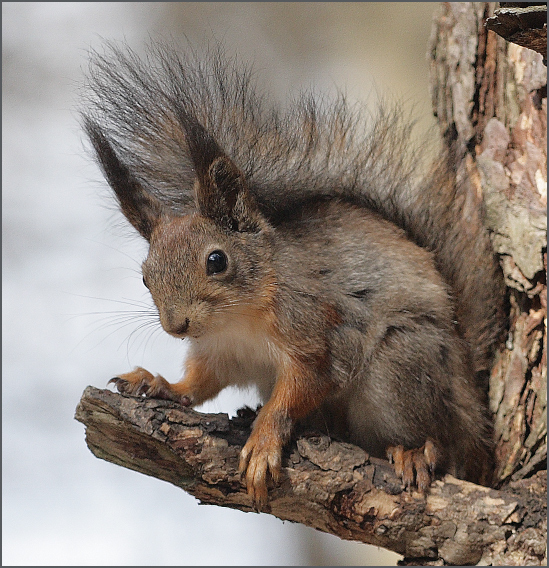
And such a frame of the wagtail on the ultrazoom is almost impossible to remove

It is important that in this photo you can visually feel the real requirements for equipment for serious photohunting. Desirable carcass carcass with the best autofocus, and 150 mm is clearly short, you need 300-400 mm with a diaphragm 2.8-4.
I specifically emphasize that the fix should be a macro lens. Because macro photography is a whole world in which you plunge into wonder and delight. In fact, can the eye see such details?

Passion for macro photography normally takes a couple of years. And if you do it seriously - the rest of your life.
Long-focus fix is well suited for portrait shooting
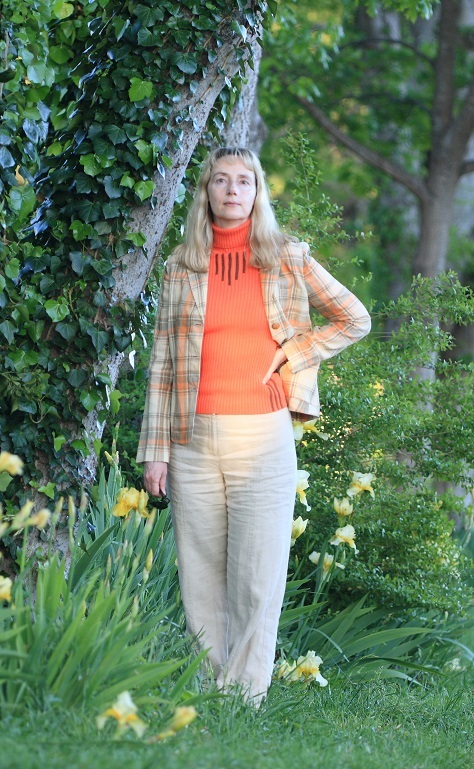
Including not only for face and waist (as is customary to think), but also for full-growth portraits.
Conveniently shoot genre scenes

or

Shooting sports competitions is a separate area of photography. A telephoto lens is simply necessary for this.
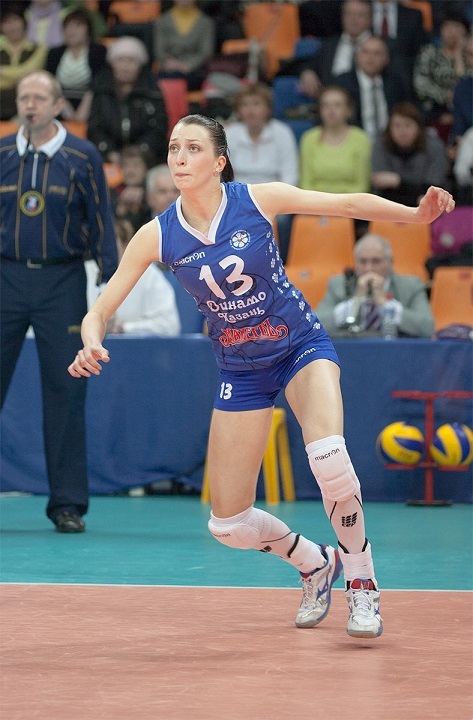
Although in the hall or at the stadium you quickly realize that 150 mm is not enough.
The training stage begins on the first section of the S-shaped curve, occupies the entire second and part of the third. Those. as understanding and experience accumulate, the results begin to grow slowly at first, and then grow faster and faster. Beginner amateur photographer turns into an experienced / advanced. Which artificial restrictions are no longer needed.
Naturally, at this stage the amateur photographer should upload his work to the network and carefully analyze the feedback.
It is infinitely useful to delve into the history of photography and find an opportunity to look through photo albums of recognized masters. Unfortunately, in Russia it is difficult to do this; one has to limit oneself to images on the Internet. And this is not at all like a paper print.
I especially want to emphasize that the use of zooms on this camera during this period is highly undesirable. It is better not to have them at all (I sold mine 18-50 / 2.8 a couple of years after buying CSR). In the extreme case, you can use an advanced compact (not an ultrazoom! In such compacts, the zoom ratio is usually of the order of 3) with a wide angle. But it should be a separate camera for documentation, not artistic photography.
Stage of awareness
At this stage, a large amount of reflective (conscious) experience accumulates. Tried all genres. The realization comes that your photos are not worse than the average level and sometimes good luck happens. The amateur photographer is conscious of being formed, having acquired his own individuality, his own vision, his approach to photography. Technically, he is quite sophisticated enough to film - generally speaking - with any photographic equipment. (As test pilots say, they “must fly freely on everything that can fly and, with some effort, on the fact that it cannot fly.”)
Those. from a technical point of view, the task of the stage is to reorganize the park of photographic equipment under the existing individual style. (As a result, everything said below is no longer a recommendation. This is my personal opinion based on my own experience.)
From the point of view of "carcasses", it was at this stage that I switched to full frame. Those. paired with an existing camera with an APS-C format sensor, I added a camera with a Full Frame sensor. Although, of course, nothing bothers you and start learning from a full-frame carcass, if you can afford it.
The park of optics is formed under individual features. The main constraint, as usual, unfortunately, is the budget.
Since the individuality has already taken shape, but has not yet been settled, the acquisition of a full line of bright zooms often looks very attractive. They have all the major manufacturers of photographic equipment. Usually they are 3, something like 16-35 / 2.8, 24-70 / 2.8 and 70-200 / 2.8. If your budget allows, this is almost the perfect solution. It is better to start with 24-70 / 2.8, because This is a universal "workhorse", closing the most sought-after FR interval.
Separately, I want to say about the acquisition of "wide" (wide-angle lenses). I have such a zoom of 16-35 mm, but I am quite skeptical about such glasses. Very much they "incite" to the shooting "from the belly", without deliberate and clear composition of the frame. In addition, they all give large distortions that can not always be corrected. For example, here is a frame from Perervinskaya Orthodox Seminary, where inside is very closely

After editing the geometry is obtained as follows
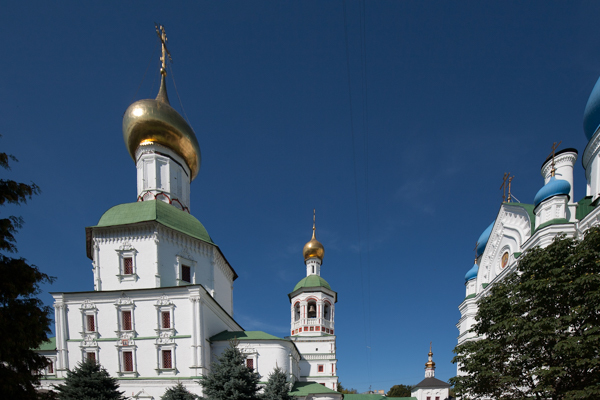
Such distortions are unacceptable, frame to marriage.
In particular, therefore, I propose to think about shooting panoramas as an alternative to "width". I see two main advantages in this: a) the restriction on the size of the scene is removed; b) as a result, you need to rebuild your vision. You can check it yourself, learn to see spectacular panoramas is not so simple. Well, savings, high-quality "shirka" are expensive.
Personally, this topic greatly fascinated me last year. I actually re-analyzed familiar scenes in terms of removing size limits. I will show a couple of examples.
In this case, it is just evident that the coverage can be any

And in this case, in my opinion, is still more interesting.

Many people are trying to shoot a monument to Peter. But usually technology does not go beyond the scope of capabilities, therefore it turns out to be trite. In addition, the monument is ambiguous - and in this sense is a challenge to the photographer. How beautiful to shoot is not the most beautiful. In my opinion, the increase in volume, space, “air” around the monument allowed to “fit” it into the urban space, to get an unbanal result.
Stage of the search for beauty and new meanings
This is the fifth, final stretch of the S-shaped curve. An experienced amateur photographer is already a little tired from his hobbies, there is a feeling that “all this was, was, was” (c). I want something new. Not in a global sense, everything has already been tested. And from the point of view of new nuances, angles, shapes, colors, beauty of a photographic picture.
From a technical point of view, this often leads to the fact that a person moves away from universal zooms to high-quality fixes that allow you to make shots like the following
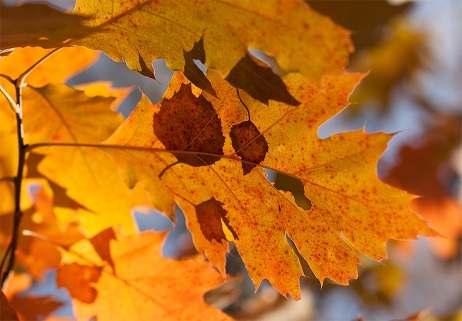
or

And these are not necessarily new modern lenses. Many are starting to experiment with old glasses, which give an unusual beautiful pattern and blur.
In general, everything is already extremely individualized and peculiar.
Separately, I want to mention the fate of the crooked carcass with which we were trained. It makes no sense to sell it for a very obvious reason.
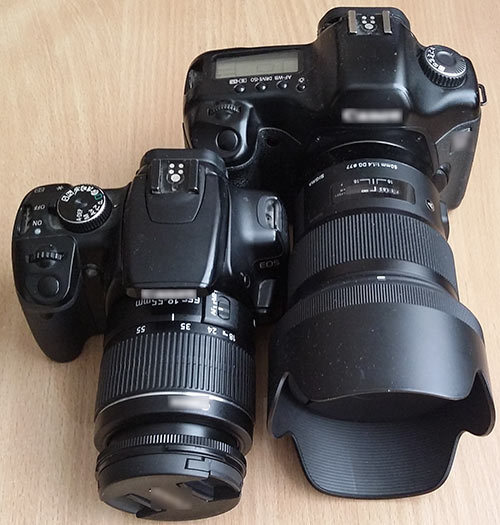
In addition to the difference in geometric dimensions, a crooked bird with a whale lens weighs 770 grams, and a full-frame with a high-quality fix is 1800 grams. (Separately, I note that I bought a crop in 2006, and a whale plastic lens to it - in 2016. Ie categorically should not buy a whale for training!) I take a whipped carcass with a whale lens on tourist trips and use it for documentation.
There are other important factors why you should not refuse from a carcass with an APS-C format sensor:
• it is better suited for working with telephoto lenses, i.e. for photo hunting and sport shooting it is better than full frame;
• in a sense, the presence of such a camera doubles the fleet of optics. In fact, the full frame "fifty dollars" - a universal lens. And on the crope is a great "portrait" with EGF 75-80 mm (depends on cropping). At the same time, it is important to remember that from the circle of the image of a full-frame lens, the most “tasty”, high-quality part gets onto the matrix of the cropped carcass.
Instead of conclusion
Once again I want to emphasize that all of the above is my personal subjective point of view. I am sure that you have it different. It seemed to me important to tell about the conclusions to which I came. What to use from this experience (and whether to use it at all) is up to you. I hope that in the comments you share your thoughts on the issues raised.
So, let me remind the curve

Sites of the S-shaped curve are designated by figures. But I propose a slightly different classification, since they do not coincide with the stages of evolution:
• Stage of awakening interest or “lure them guys” - section 1.
• Apprenticeship stage - plots 1,2,3
• Awareness stage - plots 3-4
• The stage of the search for beauty and new meanings - section 5.
On each of them (of course, the names are quite conditional) the amateur photographer requires different photo equipment. We will talk about this.
Stage of awakening interest
For unknown reasons, at an unknown point in time (which may never come at all), a person suddenly becomes aware of an impulse in himself, a desire to try to take pictures. It is clear that he does not know how and does not understand, so he does not have special requirements for the functionality of the equipment. He just does not understand what is needed. It is important that it be cool, beautiful, not very heavy / volume and not worse than the others.
Under these criteria, an amateur compact camera with a non-replaceable lens from the so-called discharge is ideal. "Superzoom" (another term - "ultrazoom"). Those. when the built-in lens can shoot in a wide range of focal lengths (RF), for example, 4.3–258 mm. What is in terms of a full frame is the range of equivalent focal lengths (EGF), taking into account the crop factor of this camera from 24 to 1440 mm. That is, as they say, the optical zoom is 60x.
When I was shooting with such a camera, there was no such equipment yet, I used a superzoom with EGF of 35-280 mm.
')
What is really good ultrazoom? This is a truly compact all-in-one solution that allows you to try all genres of photography.
The main task of the initial stage is the formation of positive motivation. Strong enough for a neophyte to have the strength to overcome the difficulties that lie ahead. So that he understands why he overcomes them and gets pleasure from acquiring new knowledge and skills. In other words, half in jest, the main thing is “not to frighten”. For this, ultrazoom is perfect.
I will illustrate what was said with my old frames.
Superzoom good on tours

Fisherman's Bastion, Budapest
And with some effort, you can already get beautiful pictures that are admired by friends and acquaintances (as well as on instagram and on Yandex pics). for example

View of the evening Budapest
In this case, it is important to try shooting at dusk, in the so-called. "Mode time". Here is another similar frame.

Prague Castle
This frame is interesting because it stimulates the novice to learn how to handle digital photos. Because the original frame looks like this

In order to learn from the source to do what I showed (of course, this is just one of the possible options), it took me several years.
Ultrasound allows you to make and conceptual (term conditional) pictures like these

or

The pair of frames shown for me personally was an important milestone in evolution, because I felt that there is “something in them” in them, this is not just a passing “photo”. This feeling is just very conducive to the formation of positive motivation for further hobby photography.
Ultrasum allows you to feel the beauty of photohunting. The next frame shook me when I saw the result on
the monitor

In fact, there were 5 meters to a squirrel. And here she is close to “as if alive” and individual hairs are visible.
The following frame illustrates the use of ultrazoom in genre photography.

Nice beach
A telephoto lens allows you to shoot people and animals in “natural” conditions from a distance. Not every person is able to shoot a classic “street” with a “fifty dollars”, many are embarrassed. ("Fifty" - a lens with a fixed RF = 50 mm.)
Finally, frames from the ultrazoom can already be displayed in fairly decent places. In this case, the emphasis is not on the “decentness” of the place, but on the fact of the display of their work to outsiders. From a psychological point of view, at this moment there is a separation of the work from its creator, as I (following N. Berdyaev) express, “objectification”. At the same time, “suddenly” it turns out that a photo that seemed so cool to you is perceived by others as a special “crap”. With photos of sunsets, cats and dogs, all public galleries are clogged. That your pictures are not even secondary, but endlessly banal.
Those. simultaneously with the moments of “pure buzz”, the moments of awareness of one’s limitations and imperfections are also needed. Disadvantages point to the need to learn - and pleasure creates motivation for such efforts.
It is important that ultrazoom photography simultaneously allows you to feel the limitations of the technique. For example, a sit-down squirrel can still be removed - but it is already difficult to move, the autofocus (AF) speed does not allow. When using, as they say, the “long end” of the lens produces a large number of blurred frames, it comes to the realization that from a formal opportunity to shoot 1440 mm on EGF to successful frames there is a “huge distance”. Everything trembles and shakes. There comes an understanding that the available aperture values at the long end are too “dark”, the shutter speed is required too long. Therefore, with the hands of little you take off, you need a tripod. And better, a brighter (photographers often say "fast") lens.
At this moment a transition takes place (I emphasize once again that it may not happen individually) to the next stage.
Also at this point it is advisable to analyze your preferences. After all, I advise you to use the ultrasound not only because it is convenient for beginners. The focal range from 32 to 1440 mm allows you to do anything. But a statistical analysis of your images with a sufficient sample size will show your favorite DF.
To do this, you need to put all the photos in one folder (I did it on an array of about 4000 frames) and run the ExposurePlot program (there are other applications). The output will be a schedule

on the abscissa axis of which the focal lengths are plotted, and on the vertical axis - the number of frames taken on this DF.
Figure too small, consider the individual fragments.
Wide angle

Hmm, 1600 shots from 4000 (40%) is, of course, a lot from my current point of view. But for a beginner, this is normal.
Next fragment

It can be seen that on the focal from 40 to 60 mm about 600 frames were made.
And the last fragment

shows the demand for long FR.
Thus, the analysis of an array of photos shows that it is advisable to me personally to have a wide-angle zoom, “fifty dollars” and telephoto lenses from 120 mm and longer.
Naturally, your preferences will be different, I illustrate the approach to the analysis.
Stage of apprenticeship
At this point, you need to get rid of the ultrazoom. It is not easy, I personally was helped by the fact that I was leaving for work in the USA and told myself that I would buy a camera with interchangeable lenses (CSR). Those. I cut off my retreat.
What technology is required at this stage? In commission stores in Texas, I constantly met 1-2-3 film cameras. This is due to the fact that in American photography schools training begins on film cameras (at least, that was 10 years ago). Well, and when such a carcass becomes unnecessary, she goes to the next “schoolboy” through the commission.
I think this is a very correct approach. Shooting on the film (and, especially, on the slide) teaches you to think before pressing the "release" button. In this sense, digital cameras corrupt, turning many into "thoughtless clickers." Which remove "everything that moves", not including the brain.
I myself shot on film a long time ago with FED-4 camera, with a full development cycle and photo printing in the bathroom. Of course, now shooting on film is technically difficult and costly. We still need to find a film, and then a laboratory, where to show it. But if there is enough fuse, I highly recommend taking pictures on a film camera.
Similarly, corrupts a large zoom. From the point of view of a photo artist, a 60-fold zoom is a meaningless disgrace. Instead of deliberately building the composition of the frame, most of the lazy owners of such "combines" stupidly stand on the spot and push the zoom button.
And to zoom in at this stage, you need, as they say, "legs." For the apprenticeship stage, a “fix” is ideal (recall, a lens with a fixed RF).
What fix to choose? The usual recommendation in such cases is 50 / 1.8. This is the cheapest and affordable fix. But I think that it is better to take the lens longer. I will explain why. The point is that a person needs to be put in the most difficult position. So that he turned on the "smarter" and began to look for those frames that can be removed by the limited set of equipment that he has.
Lyrical digression. In the dark years of developed socialism, many creative individuals complained about the dominance of ideological dogmas and censorship. What did not prevent them from creating good (as it now turns out) works. Then the ideology and censorship were canceled. The creators rejoiced. And personally, I was expecting a stream of masterpieces and a nettle. But it quickly became clear that boundless freedom by no means contributes to the birth of unbanal works.
Thus, the choice of FR fix depends on the degree of motivation. Personally, I, for objective reasons (I needed a macro lens with a maximum FR for work) acquired a fix 150 / 2.8. And filmed only for a few years. However, I will not take such extreme advice to others. In my opinion, a macro lens with a fixed DF of about 90–100 mm would be optimal.
Once again I emphasize the essence of this approach. Around a person with a camera is an infinite number of plots (we are talking about our vision, taking into account the ability to turn our head). However, a lens with a fixed RF “cuts” out of this infinite continuum only a specific piece of limited size. The longer the focal length, the smaller the fragment. The idea boils down to the fact that one of the main tasks of the educational stage is to develop the ability to photographic "in and out ". Those. the ability to see in a huge panorama the plot, which is and technically possible to capture the existing lens. Each lens produces its own “vision”. At the apprenticeship stage, it is necessary to develop this ability (preferably still aware of the course of this process) for a specific lens. Further, on each subsequent “glass” (another slang term for interchangeable lenses) this process will proceed easier and faster.
I will illustrate the idea with photographs.
Here is a frame at the widest angle (technically, this is a panorama of many frames) that is accessible to a person standing on the Bolshoi Moskvoretsky Bridge and looking at the Kremlin and the Moscow River

The photo is interesting in its own way, but if you don’t be lazy, force yourself to think and switch to vision through a lens with RF = 150 mm, then you can find such a frame in this scene

Which is more interesting than the endless panorama, at least by the fact that this composition is not visible to the naked eye (the distance to the buildings in the background is 4-5 km). (The point of shooting is slightly offset compared to the wide-angle panorama, but in this case it doesn’t matter.)
It’s because tele-lenses make me “turn on creative”, see what I don’t see under normal conditions - I love them.
Further. The combination of fast and tenacious autofocus CSR (I do not specifically specify which carcasses we are talking about, it can be a mirrorless camera, a SLR, etc.) with a bright telephoto lens that allows you to shoot birds and animals in motion.
If on the ultrazoom frame a protein patiently posed motionless, then on this frame she moved

And such a frame of the wagtail on the ultrazoom is almost impossible to remove

It is important that in this photo you can visually feel the real requirements for equipment for serious photohunting. Desirable carcass carcass with the best autofocus, and 150 mm is clearly short, you need 300-400 mm with a diaphragm 2.8-4.
I specifically emphasize that the fix should be a macro lens. Because macro photography is a whole world in which you plunge into wonder and delight. In fact, can the eye see such details?

Passion for macro photography normally takes a couple of years. And if you do it seriously - the rest of your life.
Long-focus fix is well suited for portrait shooting
Including not only for face and waist (as is customary to think), but also for full-growth portraits.
Conveniently shoot genre scenes

or

Shooting sports competitions is a separate area of photography. A telephoto lens is simply necessary for this.

Although in the hall or at the stadium you quickly realize that 150 mm is not enough.
The training stage begins on the first section of the S-shaped curve, occupies the entire second and part of the third. Those. as understanding and experience accumulate, the results begin to grow slowly at first, and then grow faster and faster. Beginner amateur photographer turns into an experienced / advanced. Which artificial restrictions are no longer needed.
Naturally, at this stage the amateur photographer should upload his work to the network and carefully analyze the feedback.
It is infinitely useful to delve into the history of photography and find an opportunity to look through photo albums of recognized masters. Unfortunately, in Russia it is difficult to do this; one has to limit oneself to images on the Internet. And this is not at all like a paper print.
I especially want to emphasize that the use of zooms on this camera during this period is highly undesirable. It is better not to have them at all (I sold mine 18-50 / 2.8 a couple of years after buying CSR). In the extreme case, you can use an advanced compact (not an ultrazoom! In such compacts, the zoom ratio is usually of the order of 3) with a wide angle. But it should be a separate camera for documentation, not artistic photography.
Stage of awareness
At this stage, a large amount of reflective (conscious) experience accumulates. Tried all genres. The realization comes that your photos are not worse than the average level and sometimes good luck happens. The amateur photographer is conscious of being formed, having acquired his own individuality, his own vision, his approach to photography. Technically, he is quite sophisticated enough to film - generally speaking - with any photographic equipment. (As test pilots say, they “must fly freely on everything that can fly and, with some effort, on the fact that it cannot fly.”)
Those. from a technical point of view, the task of the stage is to reorganize the park of photographic equipment under the existing individual style. (As a result, everything said below is no longer a recommendation. This is my personal opinion based on my own experience.)
From the point of view of "carcasses", it was at this stage that I switched to full frame. Those. paired with an existing camera with an APS-C format sensor, I added a camera with a Full Frame sensor. Although, of course, nothing bothers you and start learning from a full-frame carcass, if you can afford it.
The park of optics is formed under individual features. The main constraint, as usual, unfortunately, is the budget.
Since the individuality has already taken shape, but has not yet been settled, the acquisition of a full line of bright zooms often looks very attractive. They have all the major manufacturers of photographic equipment. Usually they are 3, something like 16-35 / 2.8, 24-70 / 2.8 and 70-200 / 2.8. If your budget allows, this is almost the perfect solution. It is better to start with 24-70 / 2.8, because This is a universal "workhorse", closing the most sought-after FR interval.
Separately, I want to say about the acquisition of "wide" (wide-angle lenses). I have such a zoom of 16-35 mm, but I am quite skeptical about such glasses. Very much they "incite" to the shooting "from the belly", without deliberate and clear composition of the frame. In addition, they all give large distortions that can not always be corrected. For example, here is a frame from Perervinskaya Orthodox Seminary, where inside is very closely

After editing the geometry is obtained as follows

Such distortions are unacceptable, frame to marriage.
In particular, therefore, I propose to think about shooting panoramas as an alternative to "width". I see two main advantages in this: a) the restriction on the size of the scene is removed; b) as a result, you need to rebuild your vision. You can check it yourself, learn to see spectacular panoramas is not so simple. Well, savings, high-quality "shirka" are expensive.
Personally, this topic greatly fascinated me last year. I actually re-analyzed familiar scenes in terms of removing size limits. I will show a couple of examples.
In this case, it is just evident that the coverage can be any

And in this case, in my opinion, is still more interesting.

Many people are trying to shoot a monument to Peter. But usually technology does not go beyond the scope of capabilities, therefore it turns out to be trite. In addition, the monument is ambiguous - and in this sense is a challenge to the photographer. How beautiful to shoot is not the most beautiful. In my opinion, the increase in volume, space, “air” around the monument allowed to “fit” it into the urban space, to get an unbanal result.
Stage of the search for beauty and new meanings
This is the fifth, final stretch of the S-shaped curve. An experienced amateur photographer is already a little tired from his hobbies, there is a feeling that “all this was, was, was” (c). I want something new. Not in a global sense, everything has already been tested. And from the point of view of new nuances, angles, shapes, colors, beauty of a photographic picture.
From a technical point of view, this often leads to the fact that a person moves away from universal zooms to high-quality fixes that allow you to make shots like the following

or

And these are not necessarily new modern lenses. Many are starting to experiment with old glasses, which give an unusual beautiful pattern and blur.
In general, everything is already extremely individualized and peculiar.
Separately, I want to mention the fate of the crooked carcass with which we were trained. It makes no sense to sell it for a very obvious reason.

In addition to the difference in geometric dimensions, a crooked bird with a whale lens weighs 770 grams, and a full-frame with a high-quality fix is 1800 grams. (Separately, I note that I bought a crop in 2006, and a whale plastic lens to it - in 2016. Ie categorically should not buy a whale for training!) I take a whipped carcass with a whale lens on tourist trips and use it for documentation.
There are other important factors why you should not refuse from a carcass with an APS-C format sensor:
• it is better suited for working with telephoto lenses, i.e. for photo hunting and sport shooting it is better than full frame;
• in a sense, the presence of such a camera doubles the fleet of optics. In fact, the full frame "fifty dollars" - a universal lens. And on the crope is a great "portrait" with EGF 75-80 mm (depends on cropping). At the same time, it is important to remember that from the circle of the image of a full-frame lens, the most “tasty”, high-quality part gets onto the matrix of the cropped carcass.
Instead of conclusion
Once again I want to emphasize that all of the above is my personal subjective point of view. I am sure that you have it different. It seemed to me important to tell about the conclusions to which I came. What to use from this experience (and whether to use it at all) is up to you. I hope that in the comments you share your thoughts on the issues raised.
Source: https://habr.com/ru/post/402607/
All Articles